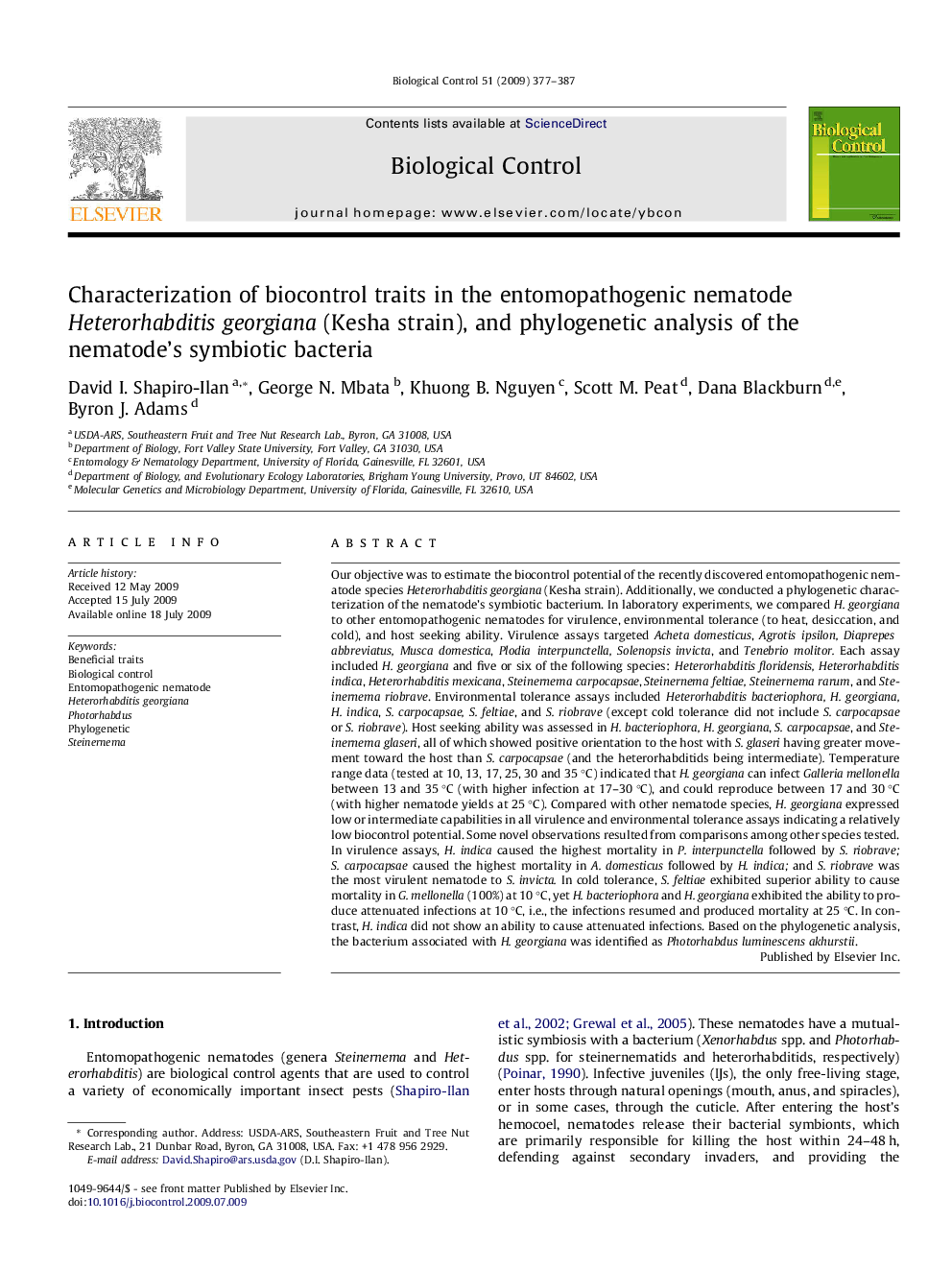| کد مقاله | کد نشریه | سال انتشار | مقاله انگلیسی | نسخه تمام متن |
|---|---|---|---|---|
| 4504539 | 1321098 | 2009 | 11 صفحه PDF | دانلود رایگان |

Our objective was to estimate the biocontrol potential of the recently discovered entomopathogenic nematode species Heterorhabditis georgiana (Kesha strain). Additionally, we conducted a phylogenetic characterization of the nematode’s symbiotic bacterium. In laboratory experiments, we compared H. georgiana to other entomopathogenic nematodes for virulence, environmental tolerance (to heat, desiccation, and cold), and host seeking ability. Virulence assays targeted Acheta domesticus, Agrotis ipsilon, Diaprepes abbreviatus, Musca domestica, Plodia interpunctella, Solenopsis invicta, and Tenebrio molitor. Each assay included H. georgiana and five or six of the following species: Heterorhabditis floridensis, Heterorhabditis indica, Heterorhabditis mexicana, Steinernema carpocapsae, Steinernema feltiae, Steinernema rarum, and Steinernema riobrave. Environmental tolerance assays included Heterorhabditis bacteriophora, H. georgiana, H. indica, S. carpocapsae, S. feltiae, and S. riobrave (except cold tolerance did not include S. carpocapsae or S. riobrave). Host seeking ability was assessed in H. bacteriophora, H. georgiana, S. carpocapsae, and Steinernema glaseri, all of which showed positive orientation to the host with S. glaseri having greater movement toward the host than S. carpocapsae (and the heterorhabditids being intermediate). Temperature range data (tested at 10, 13, 17, 25, 30 and 35 °C) indicated that H. georgiana can infect Galleria mellonella between 13 and 35 °C (with higher infection at 17–30 °C), and could reproduce between 17 and 30 °C (with higher nematode yields at 25 °C). Compared with other nematode species, H. georgiana expressed low or intermediate capabilities in all virulence and environmental tolerance assays indicating a relatively low biocontrol potential. Some novel observations resulted from comparisons among other species tested. In virulence assays, H. indica caused the highest mortality in P. interpunctella followed by S. riobrave; S. carpocapsae caused the highest mortality in A. domesticus followed by H. indica; and S. riobrave was the most virulent nematode to S. invicta. In cold tolerance, S. feltiae exhibited superior ability to cause mortality in G. mellonella (100%) at 10 °C, yet H. bacteriophora and H. georgiana exhibited the ability to produce attenuated infections at 10 °C, i.e., the infections resumed and produced mortality at 25 °C. In contrast, H. indica did not show an ability to cause attenuated infections. Based on the phylogenetic analysis, the bacterium associated with H. georgiana was identified as Photorhabdus luminescens akhurstii.
Journal: Biological Control - Volume 51, Issue 3, December 2009, Pages 377–387